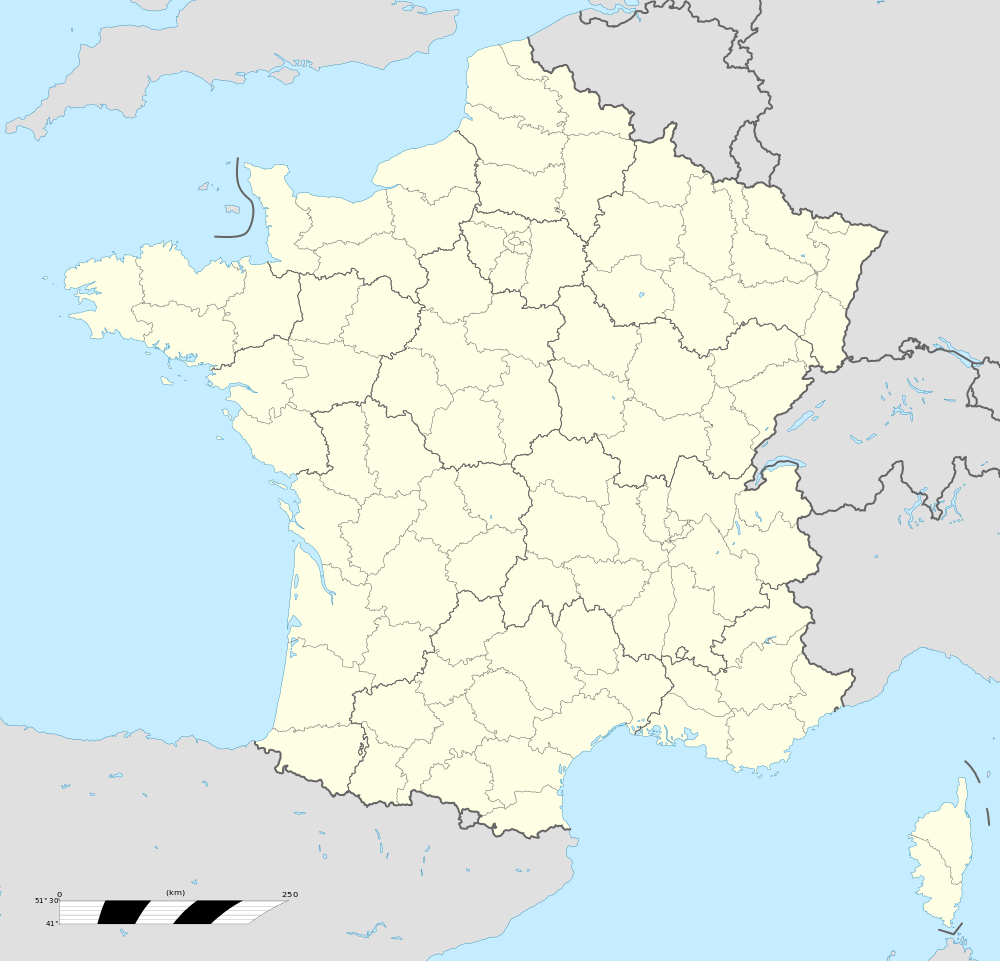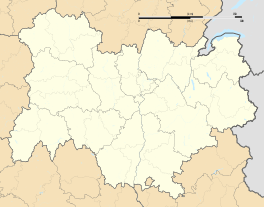Balbigny
| Balbigny | |
|---|---|
|
The town hall in Balbigny | |
 Balbigny | |
|
Location within Auvergne-Rhône-Alpes region  Balbigny | |
| Coordinates: 45°49′09″N 4°11′17″E / 45.8192°N 4.1881°ECoordinates: 45°49′09″N 4°11′17″E / 45.8192°N 4.1881°E | |
| Country | France |
| Region | Auvergne-Rhône-Alpes |
| Department | Loire |
| Arrondissement | Roanne |
| Canton | Néronde |
| Intercommunality | Balbigny |
| Government | |
| • Mayor (2008–2014) | Jean-Marc Regny |
| Area1 | 16.98 km2 (6.56 sq mi) |
| Population (2009)2 | 2,809 |
| • Density | 170/km2 (430/sq mi) |
| Time zone | CET (UTC+1) |
| • Summer (DST) | CEST (UTC+2) |
| INSEE/Postal code | 42011 / 42510 |
| Elevation | 314–482 m (1,030–1,581 ft) |
|
1 French Land Register data, which excludes lakes, ponds, glaciers > 1 km² (0.386 sq mi or 247 acres) and river estuaries. 2 Population without double counting: residents of multiple communes (e.g., students and military personnel) only counted once. | |
Balbigny is a commune in the Loire department in central France.
History
Balbigny owes its name to a Roman general named Balbinius who based himself here in order to conduct a war. Nothing survives from this period. The earliest identified traces of Balbigny date from 1090.
During the eighteenth and nineteenth centuries, before the Loire was channelled, Balbigny was a village of boatmen, known for flat bottomed boats known as Rambertes which were used to transport the coal mined at Saint-Étienne. The loaded Rambertes arrived from Saint-Rambert and stopped off at Balbigny where the boat crews were changed, taking the boats to the next change-over point at Roanne. All this changed in August 1832 with the arrival of the third oldest railway line in France which connected Andrézieux-Bouthéon with Roanne, passing Balbigny en route. An extension of the rail network in 1913 saw Balbigny connected with Saint-Germain-Laval and Régny. The coal was therefore transported by rail, but the railway also gave farmers in the district access to a wider range of markets for their produce.
The road bridge crossing the Loire was destroyed in 1940 in order to hold back advancing German troops, and a ferry service was introduced to permit the river to be crossed. The bridge was rebuilt in 1950.
Population
| Historical population | ||
|---|---|---|
| Year | Pop. | ±% |
| 1962 | 1,840 | — |
| 1968 | 2,023 | +9.9% |
| 1975 | 2,314 | +14.4% |
| 1982 | 2,469 | +6.7% |
| 1990 | 2,415 | −2.2% |
| 1999 | 2,616 | +8.3% |
| 2006 | 2,546 | −2.7% |
| 2009 | 2,809 | +10.3% |
Twin towns
Balbigny is twinned with:
-
 Chaumont, Haute-Marne, France
Chaumont, Haute-Marne, France
See also
References
| Wikimedia Commons has media related to Balbigny. |